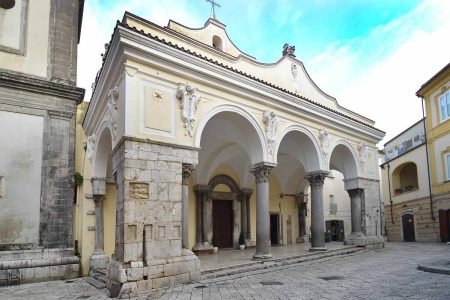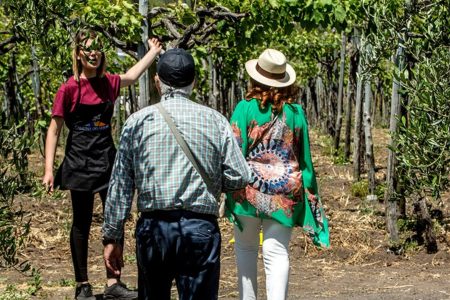Table of Contents
With the first cool of the season, generally between September and October, the time for the grape harvest, or the harvesting of grapes for the production of wine. That of the grape harvest is one of the world's most archaic customs that in the past punctuated the rhythms of rural and agricultural society in the countryside.
At this stage of the year, grapes from the vineyards are finally ripe and can be harvested to begin the process of winemaking that allows the must to be transformed into wine. Before we get to the bottled product, however, there is all the immense hard work that needs time, dedication and in-depth technical knowledge.
The ritual of the grape harvest still retains its charm and a certain historical and cultural value. In fact, this heartfelt event involved the whole family working in the fields throughout the month of September or October.
Over time, production processes have changed due to the technological progress, but the spirit and passion have remained unchanged. It is no accident that the grape harvest is the festival par excellence that concludes intense weeks of toil.
You might be interested
Tour in Sant'Agata de' Goti with winery visit and wine tasting
per person Book
Rich tasting of typical products to experience at Terrazza del Cilento farmhouse in Trentinara
per person Book
Visit to Vesuvian vineyards with tasting and lunch overlooking the Bay of Naples
per person Book
The origins of the grape harvest
The earliest records of grape harvesting appear to date back more than 10,000 years in the region of the Fertile Crescent, the present-day Middle East. In this area, grape picking was an integral part of a religious ceremony to thank the deities for the fruits given by the earth to humans.
Since then the custom of growing grapes has spread to the Mediterranean and to every corner of the world, making wine one of the most popular alcoholic beverages. September has become the quintessential harvest month, when bunches of grapes are ready to be picked.
The harvest ritual was a time of family sharing and cultural exchange, and already in Roman era the grape harvest included festivals to mark the beginning and end of the winemaking period.
For example, on August 19, the Vinalia Rustica, a holiday celebrated to request the protection of the grapes ripening on the vines. Propitiatory rites were performed to ward off adverse events that could jeopardize the harvest, and a lamb was sacrificed to Jupiter to receive a bountiful harvest in return.
Instead, on October 11 they celebrated the Meditrinalia at the conclusion of the grape harvesting work. The new wine, or rather must, was mixed with the old wine to increase its alcohol content and prevent the new wine from going bad in the dolia, large earthenware containers. Finally, April 23 was the turn of the Vinalia Prioria, events where new wine was tapped from dolia and the drink was tasted for the first time.
How the harvest takes place
The word grape harvest stands for the process of picking grapes to be used for winemaking. The fruits will become must, and through alcoholic fermentation, will turn into wine. The process of wine production requires deep dedication, study and love, so much so that it has been calculated that it takes four years for each vine to produce fruit suitable for harvest.
But when precisely does the harvest take place? The answer seems obvious, but this is not always the case. In fact, the climate has the power to influence the development of vineyards and thus also the stages of harvesting, which can take place early or late. This is because one can only harvest when the grapes are ripe, that is, when the ratio of sugars to acids in the berries is at the ideal point.
Usually harvest time falls between the end of August and November, then dividing into 3 specific periods: August/September, September/October and October/November. Figuring out when grapes are ripe requires great professionalism as each grape can be evaluated by different methods and techniques.
The first step of the harvest involves the grape harvest which must be selected during the coolest hours and must not be harvested when wet. Spoiled berries should be discarded, taking only those that are healthy and free of mold. Grapes can be harvested by hand or mechanically.
The manual technique is done by hand by workers who select suitable bunches by cutting them with specific scissors. It is a more expensive mode, but you will have a perfect selection of grapes. In contrast, mechanical harvesting involves the use of affixed machines that shake the vine to drop the clusters. This system is faster and less expensive, but with a lower degree of selection.
The second stage of the harvest is the pressing of grapes to produce the wort. The grains are compressed to release the internal liquid, which at this time is composed for 80% of pulp. Crushing was once done barefoot by family members, whereas today it is done by special machinery.
The third stage of the winemaking process is the fermentation, or the step that allows the grapes to become wine. It takes place inside large tanks at a controlled temperature that is usually between 16°C and 20°C for white grapes and 25°C and 30°C for red grapes. Once alcoholic fermentation is complete, the wine must undergo further steps of refermentation and aging before being filtered and finally bottled.
Lots of experiences to celebrate the grape harvest
Are you a wine lover and every opportunity is good to taste a nice glass of white or red? Then why not purchase one of our activities dedicated to the fantastic world of wine production!
For example, you can't miss the splendid MAVV Museum, the museum hub at the Royal Palace of Portici that offers an educational and scientific tour of Italian and Campania viticulture. The MAVV includes interactive and digital experiences, as well as tastings of wines from the Vesuvian area and the Phlegraean Fields.
But if you don't want to lock yourself within the walls of a museum, you can always opt for this tour in Sant'Agata de' Goti with a visit to a wine cellar. You will be able to admire the wonderful village of Sannio, and after the walk through the historic center you will be taken to one of the most renowned wineries in the area. Here you will learn about the history of the family that runs it and there will be room for a tasting of wines and local products.
Also very suggestive is this Visit to Vesuvian vineyards with wine tasting and lunch on the Bay of Naples. The activity takes place inside a wine cellar with a magnificent panoramic view. You will be able to visit the winery and enjoy a lovely lunch of cured meats, pasta dishes and desserts. You will also have the opportunity to try some of the best wines from the Vesuvian area, including the Lacryma Christi Reserve and the Passito Bianco IGT.
Have you found the right experience for you? Then rush to reserve your spot!




0 Comments